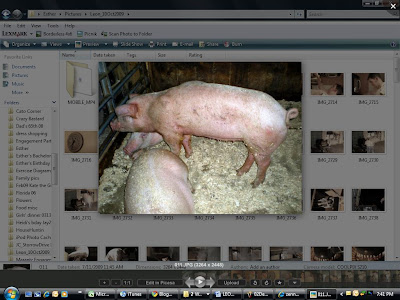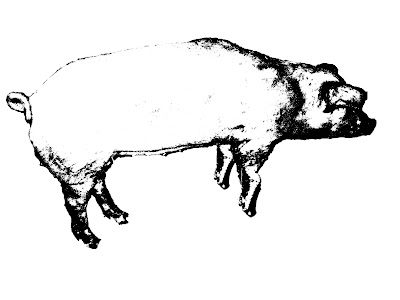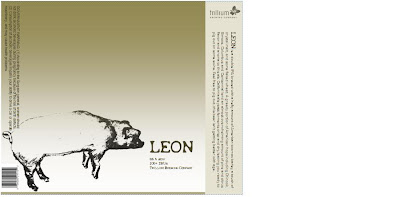Given the deluge of hugely hopped DIPAs and Imperial stouts that have become the norm, I've been retreating to the more moderate, but still subtly complex and extremely flavorful English pub beers. Still, it was tough to go to the other end of the extreme. To get away from the big-is-good American attitude just didn't happen...my original intentions were outsted. I wanted to start with the very basics and brew a truly quaffable proper ordinary bitter. But that would have left me with a couple pounds of Golden Promise, and what am I going to do with just a couple pounds of British pale ale malt, right?

Just throw it all in, change the specialty grain profile, and I'll have an ESB. After all, my buddies are always helping me drink these beers, and just like most Americans, they've been trending toward the big-bigger-biggest beers. I didn't want anything 'Ordinary' passed over for something bigger. Also, I've never been to England, so I really don't have much to to compare it to as ordinary bitters generally don't exist here in the States. I generally will learn the most about brewing a particular style if I have some of the better rated and/or personally preferred commercial examples to taste alongside the homebrew.
My first crack at the style recipe was formulated after consulting my new copy of Jamil's Brewing Classic Styles, and the well worn but still venerable Designing Great Beers by Lewis. While Jamil's recipe called for some low Lovibond Crystal malt (C15), I've tasted some ESBs, and generally my favorites thus far had a nice luscious mouthfeel, caramelized malty sugars (leaving the impression of caramel-y more so than sweet), wonderfully fruity and complimentary British yeast, a touch of roast, and a pared down/just-enough-to-balance-everything residual sweetness on the finish. Hops are firm but never harsh. They are intended to be woodsy, a touch of spice and earth, but nice and snappy on the finish to make you want to take another mouth filling sip. Kent Goldings are classic here, but I went with the ultra fresh (and Americanized version) 2009 Hops Direct Willamette.
Here are the specialty grains. Each are added to the big measuring cup, after taring the digital weight scale. Interesting how the flaked grains take up much more volume than an equivalent weight of crystal malt. You can see the relatively small amount of roasted malt (in this case Carafa III, which is 525L) at the top of the cup. This German malt should add that smooth roast background that I'm looking for, as well as provide some aging protection that I've heard so many anecdotal stories about.

I did add some Calcium Chloride to my strike water, in order to assure adequate Calcium (enough for ~50ppm).
On to the recipe...nothing crazy here, aside from perhaps the somewhat unusual addition of the flaked wheat. Its been added to hopefully help generate a smooth as silk mouthfeel, which I hope will be accentuated by the intended low CO2 volume in the bottle. This was recommeded by Dann Paquette in his recipe for a Yorkshire Bitter (which appears to nimbly straddle the ordinary/special threshold) in his discussions w/ the BrewLocal guys, so I figure that the wheat will help to prop up the body and head retention which can be a little problematic in a low CO2 beer. I have flaked wheat on hand, so I used that vs. torrified. But, as is probably expected, I'll probably 'go American', and wimp out, carb in the low 2s vs the more style appropriate high 1s.
Mashed at a bigger-bodied ~154-155 in my 10 gallon HDPE cooler.
This "Ousted Special Bitter' is already happily fermenting away at ~66F less than 24hours from pitching, but certainly has not yet hit high krausen. This beast of a yeast blew the lid off the last batch I fermented, and I suspect the vigorous krausen will make a second appearance here. I continue to tempt fate with the ill advised combination of 1. not-quite-enough of a headspace in the fermenter and 2. 3 piece airlock. What the hell is my problem?
Things still look quite calm (don't they always right before disaster?). I'll likely move the bucket away from the small cool microenvironment where its situated now, to raise the temp to ~68-69F ambient after the first 48hrs to ensure complete attenuation. If all goes well with batch 2 of the pot&kettle and this OSB, I'll likely make this yeast my house British strain, and add another selection to the yeast bank.
| OSB |
| Extra Special/Strong Bitter (English Pale Ale) |
| Type: All Grain | Date: 12/26/2009 | ||||||||||||||||||||||||||||||||||||||||
| Batch Size: 6.00 gal | Brewer: JC | ||||||||||||||||||||||||||||||||||||||||
| Boil Size: 6.87 gal | Asst Brewer: | ||||||||||||||||||||||||||||||||||||||||
| Boil Time: 60 min | Equipment: My Equipment | ||||||||||||||||||||||||||||||||||||||||
| Taste Rating(out of 50): 35.0 | Brewhouse Efficiency: 70.00 | ||||||||||||||||||||||||||||||||||||||||
| Taste Notes: | |||||||||||||||||||||||||||||||||||||||||
| Ingredients | |||||||||||||||||||||||||||||||||||||||||
|
| |||||||||||||||||||||||||||||||||||||||||
| Beer Profile | |||||||||||||||||||||||||||||||||||||||||
| Est Original Gravity: 1.056 SG | Measured Original Gravity: SG | ||||||||||||||||||||||||||||||||||||||||
| Est Final Gravity: 1.015 SG | Measured Final Gravity: SG | ||||||||||||||||||||||||||||||||||||||||
| Estimated Alcohol by Vol: 5.29 % | Actual Alcohol by Vol: % | ||||||||||||||||||||||||||||||||||||||||
| Bitterness: 39.0 IBU | Calories: cal/pint | ||||||||||||||||||||||||||||||||||||||||
| Est Color: 13.2 SRM | Color:
| ||||||||||||||||||||||||||||||||||||||||
| Mash Profile | |||||||||||||||||||||||||||||||||||||||||
| Mash Name: Single Infusion, Medium Body | Total Grain Weight: 13.32 lb | ||||||||||||||||||||||||||||||||||||||||
| Sparge Water: 1.97 gal | Grain Temperature: 72.0 F | ||||||||||||||||||||||||||||||||||||||||
| Sparge Temperature: 168.0 F | TunTemperature: 72.0 F | ||||||||||||||||||||||||||||||||||||||||
| Adjust Temp for Equipment: FALSE | Mash PH: 5.4 PH | ||||||||||||||||||||||||||||||||||||||||
|
| |||||||||||||||||||||||||||||||||||||||||





























